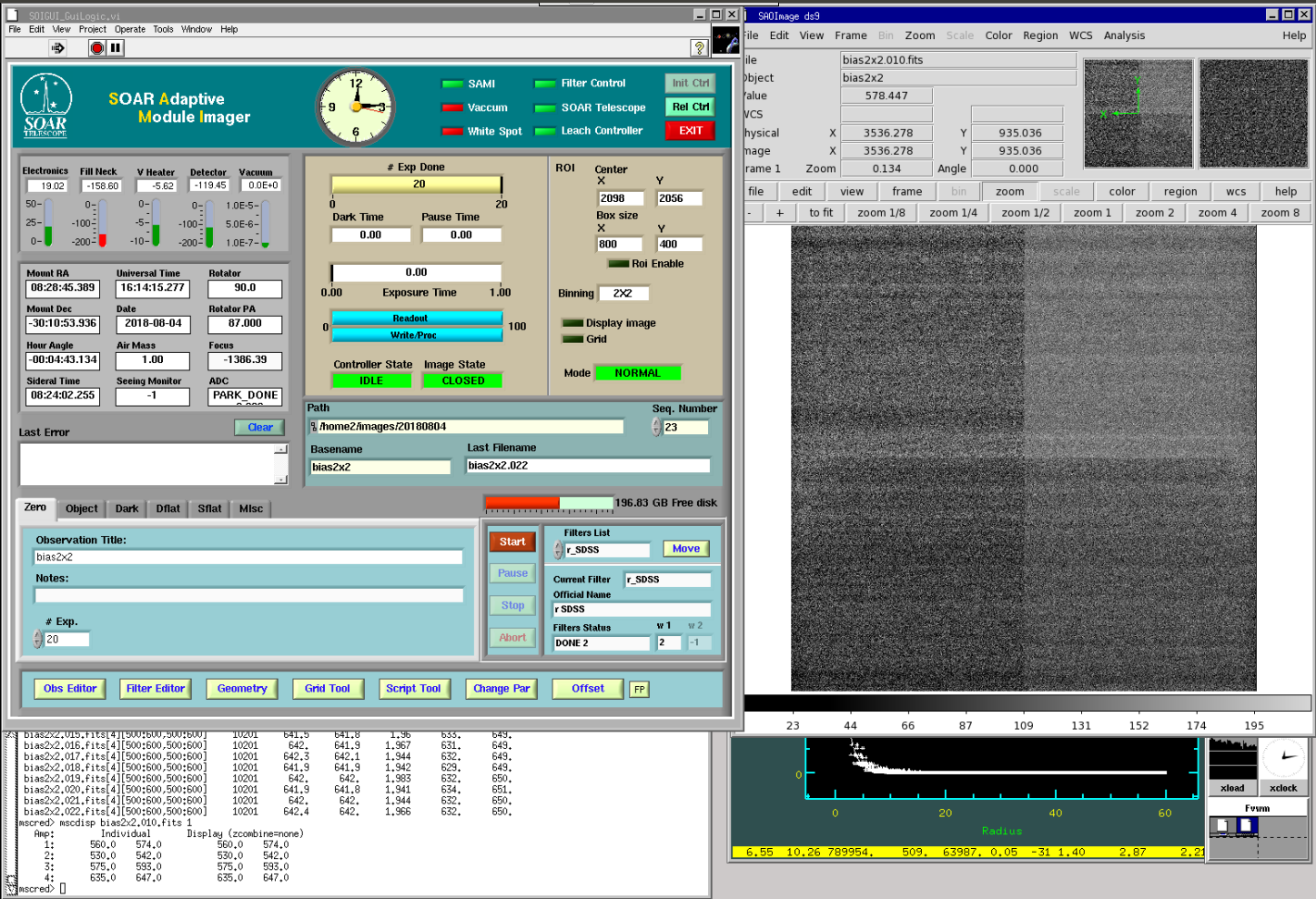Observing with SAM
Planning your Observations
The instrument setup form must be filled to define the filters, one week before the run. SAM+SAMI have a filter wheel with 7 slots for the 3-inch square filters (normally loaded with Bessell B,V.R,I filters) and can also use the SOI filter wheel that has 5 positions for 4-inch square filters (e.g. Sloan g',r', i', z' or narrow-band). Any filters used at SOI can be also used with SAM. However, SAM has only one filter wheel, filters can be changed only during the day.
Initial preparations
Like other SOAR instruments, SAM+SAMI can be used classically or remotely. During observations, the Adaptive Optics (AO) system is operated by the Support Scientist, while the observer is in charge of operating the imager SAMI (selection of the binning, filters, exposure time, dithering, and object name). The observer is also responsible for taking the bias and flat-field calibrations before the observations. Sky flats are strongly preferred over dome flats, because the latter do not correct well the shadows of the dust particles. See SAMI User Manual and SAMI Software manual
|
The observer should connect to the SAMI GUI (via the appropriate VNC connection through the SOAR or CTIO VPN; credentials should have been supplied by the Support Scientist). Once connected, create a folder for the night, with the format YYYY-MM-DD: e.g., in a terminal type "mkdir 2019-06-20". If not already running, open an IRAF window by clicking on the IRAF icon in the SAMI computer desktop (see image at right). Also launch a DS9 image viewer window (by clicking on the corresponding launcher button in the right edge of the desktop), as shown in the figure at right. Go into the SAMI GUI and setup the image directory and reset the counter to 1 or whatever number suits you, as shown below. |
|

Afternoon Calibrations
Calibrations for SAM include flats and bias frames. Flatfielding is best done using sky flats, but in case these cannot be obtained, as a backup one should obtain dome flats on the first night of the run. This also allows the observer to detect any light leaks or problems with the mounting of the filters.
During your Observing Night
| As mentioned above, you will be in charge of data acquisition, operating the SAM Imager (SAMI) user interface running on soaric9, and accessed through a VNC window after being connected to the SOAR VPN. The observer is responsible for setting file names, file types, selecting filters, exposure times, and number of exposures. The Support Scientist will operate the AO GUI (ICSoft), taking care of selecting guide stars and setting up the laser and closing the AO loop. Only science target observations are done in closed loop. Observations of photometric standards are done in open loop. |
|
Data Reduction
Standard reduction of SAMI data (bias subtraction, division by the flat field, and combination of the multi-extension FITS file into a single image) can be done at CTIO using the pyraf pipeline developed by L.Fraga, provided that bias and flat-field calibrations are taken. In this page you will find a step-by-step guide on how use the SAM PyRAF software to reduce your SAM data.
Updated on January 29, 2025, 10:48 am

